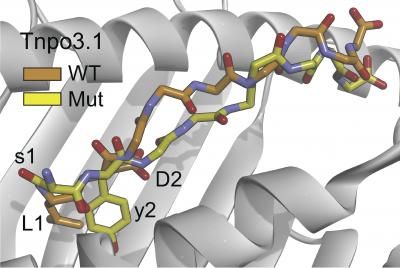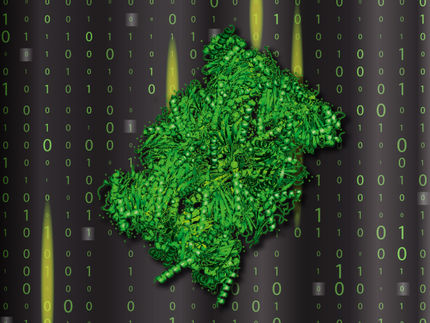New rules for anticancer vaccines
Scientists have found a way to find the proverbial needle in the cancer antigen haystack, according to a report published in The Journal of Experimental Medicine.

This simulation shows structural differences between mutant (yellow) and normal (orange) immune targets called neoepitopes. Researchers reveal how evaluating these distinctions can help pinpoint neoepitopes that elicit anticancer immune responses.
Duan et al., 2014
As cancer cells divide, they accumulate random mistakes (mutations). This process creates new versions of proteins, some of which are recognized as foreign invaders by immune cells called T cells, prompting the cells to attack and eliminate the cancer cells. With our current ability to identify all of the mutations in a patient's cancer and to understand which protein sequences can be recognized by T cells, scientists can now predict which mutations will result in new T cell targets (called "neoepitopes"). Some of these neoepitopes can then be used as vaccines to elicit a protective T cell response that destroys the cancer.
But here's the catch. These prediction tools generate hundreds of possible neoepitopes, of which only a handful can actually elicit T cells capable of attacking the tumor. And so far, there has been no reliable common denominator to help pinpoint this useful handful.
Previous attempts to predict cancer neoepitopes have relied on how strongly the mutated protein is recognized by the immune system. But scientists at the University of Connecticut now show that the strength of this interaction is a poor predictor. A better (albeit still imperfect) measure turns out to be how different the mutation looks to the T cell when compared to its normal counterpart—the more distinct, the better. These results have the potential to completely change current approaches to generating anticancer vaccines.
Most read news
Other news from the department science

Get the life science industry in your inbox
From now on, don't miss a thing: Our newsletter for biotechnology, pharma and life sciences brings you up to date every Tuesday and Thursday. The latest industry news, product highlights and innovations - compact and easy to understand in your inbox. Researched by us so you don't have to.
























































